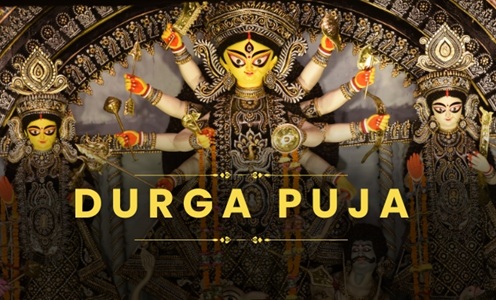As autumn’s golden light softens and communities across India begin to shimmer with festive excitement, the magnificent festival of Durga Puja heralds a time of devotion, culture and renewal. Rooted in the worship of Goddess Durga—adorned with strength, compassion and victory—the occasion brings families together, pandals alive, sweets flowing and a collective spirit of good triumphing over evil. In 2026, with dates firmly recorded, devotees have the opportunity to align their celebrations, rituals and reflections with this powerful event.

Date & Puja Shubh Muhurat
According to the panchāng from Drik Panchang for the New Delhi region, the main days of Durga Puja 2026 are listed as follows:
- Day 1 (Shashthi) – Friday, 16 October 2026.
- Day 2 (Saptami) – Saturday, 17 October 2026.
- Day 3 (Ashtami) – Sunday, 18 October 2026.
- Day 4 (Navami) – Monday, 19 October 2026.
- Day 5 (Balidan ) offering/sacrifice ritual – Tuesday, 20 October 2026, with an Aparahna Muhurat from 1:14 PM to 3:30 PM.
- Day 6 (Vijaya Dashami or Dashami) – Wednesday, 21 October 2026.
Delving into more precise timings: for example, the Balidan (sacrifice/offering) muhurat on Dashami – October 20 (some sources say Oct 20 for Balidan, Oct 21 for Dashami) – is given as 1:14 PM to 3:30 PM in the New Delhi region.
Since regional tithis and sunrise/sunset vary, devotees are encouraged to check a local panchāng for their city’s muhurats.
Significance of Durga Puja
Victory of Divine Power
Durga Puja commemorates Goddess Durga’s triumph over the demon Mahishasura, symbolising the triumph of righteousness over ignorance and evil. She is celebrated as the fierce yet benevolent Shakti, the cosmic energy that sustains life and defeats destructive forces.
Cultural & Seasonal Meaning
Falling in the month of Ashwin (autumn), Durga Puja also coincides with the end of the monsoon and the onset of harvest season in many regions. The festival thus blends spiritual, agricultural and social significance: gratitude for nature’s bounty, renewal of society and collective worship.
Rituals, Community & Joy
- Elaborate pandals (temporary festival structures) are erected; idols of Durga flanked by Ganesha, Kartikeya, Saraswati and Lakshmi are worshipped with grandeur.
- Key rituals include Bodhana (invitation of the goddess), Navapatrika (worship of nine sacred plants), Sandhi Puja (performed at the juncture of Ashtami-Navami), Kumari Puja (worship of a young girl as the goddess on Ashtami).
- Social celebrations: artistic themes, lights, community feasts, cultural programmes and finally, on Dashami, the visarjan (immersion) of the idol—symbolising return of the goddess to her abode and renewal of the cycle.
How to Observe in 2026
- Decorate your home or local temple: clean the area, set up an image/representation of the goddess, adorn with flowers, lights, and invite friends/family.
- On the main days (especially Ashtami and Navami), participate in morning and evening pujas; sing hymns (e.g., Devi Mahatmya), offer flowers, sweets and incense.
- If possible, attend a local pandal, admire the artistry, join the community.
- Reflect on the meaning: What is the “Mahishasura” in your life (ego, ignorance, fear)? How can you invoke Durga’s strength to overcome it?
- On Dashami (Oct 20/21), mark the day with gratitude, offer respect to elders, help someone in need, join a visarjan procession (or symbolic immersion of a small idol) and carry the festival’s spirit into daily life.
Why This Festival Matters
In a world often distracted by material rush, Durga Puja reconnects us with timeless truths: strength rooted in virtue, community over isolation, renewal over stagnation. It is both sacred and social—inviting worship and wonder, ritual and rejoicing. With the dates for 2026 clarified, devotees can prepare in advance to experience not just the external spectacle, but the internal transformation: seeing the goddess not only in the idol, but in ourselves and our communal ties.
May Durga Puja 2026 bring into your life the power to face challenges, the grace to walk the right path, and the joy of shared celebration. Shubho Durga Puja!